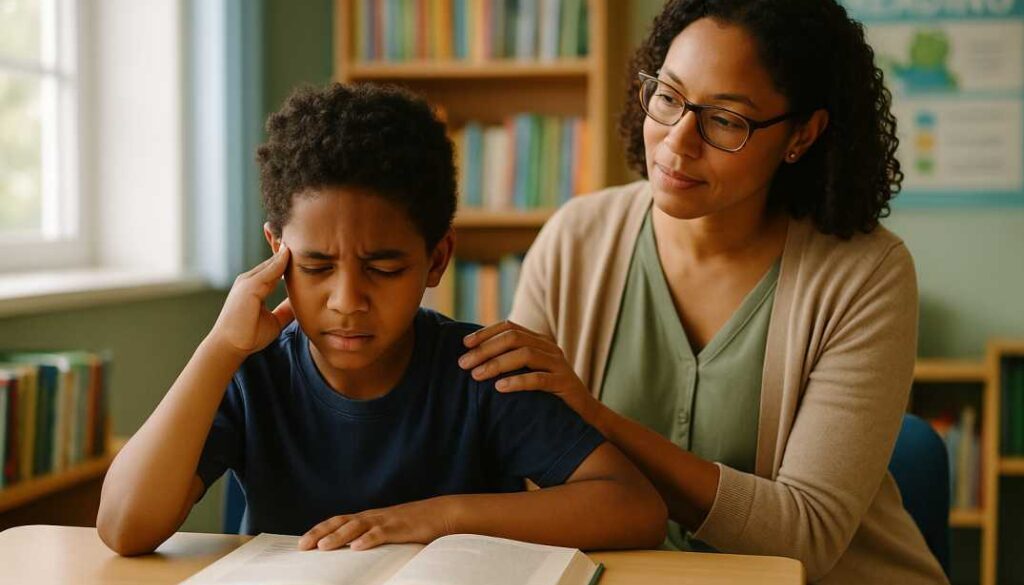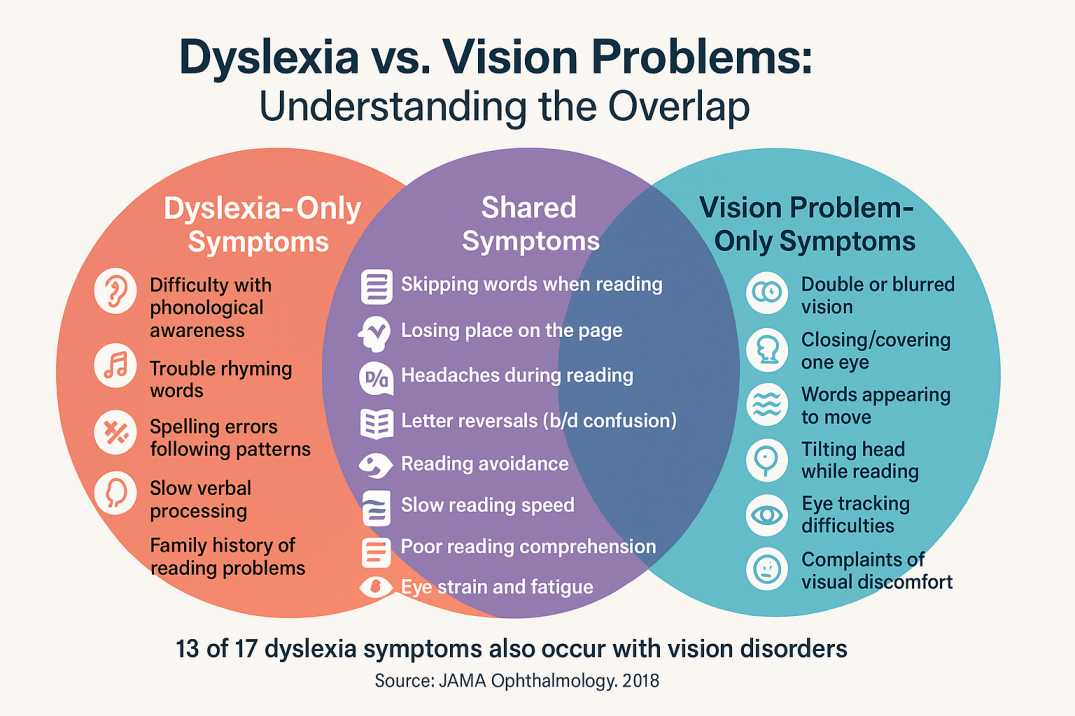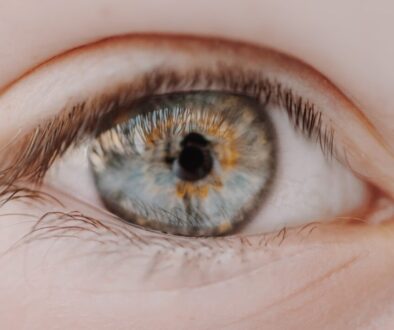Can Vision Problems Cause Dyslexia? Expert Guide | Atlanta

Understanding Dyslexia’s Complex Relationship with Visual Processing
If your child struggles with reading despite normal intelligence and quality instruction, you’re facing a challenge that affects millions of families worldwide. While dyslexia is primarily a language-based learning disability, emerging research reveals surprising connections between vision problems and reading difficulties that every parent and educator should understand.
What You Need to Know About Dyslexia
Dyslexia is a neurobiological learning disability that affects how the brain processes written language. This condition impacts approximately 5–10% of the population (with some estimates ranging up to 15–20% depending on diagnostic criteria), making it one of the most common learning disabilities in children and adults.
The core challenge in dyslexia centers on phonological processing—the ability to recognize and manipulate the sounds in spoken words. Individuals with dyslexia have difficulty:
- Matching sounds to letters (phonological awareness)
- Decoding written text into spoken words
- Recognizing familiar words quickly (rapid naming)
- Spelling accurately and fluently
Important: Dyslexia has nothing to do with intelligence. Many highly successful individuals—from entrepreneurs to scientists—have dyslexia and have learned to thrive despite their reading challenges.
The Vision Connection: Separating Fact from Fiction
Here’s what confuses many parents: dyslexia is not a vision problem, yet vision problems can make dyslexia symptoms worse—or even mimic dyslexia symptoms entirely.
What the Research Shows
Recent studies have uncovered concerning statistics about the overlap between dyslexia and vision problems:
- 62% of children diagnosed with dyslexia also have eye tracking disorders (2018 JAMA Ophthalmology study)
- Over 50% of children with dyslexia have eye movement dysfunction (2021 meta-analysis)
- 13 out of 17 dyslexia symptoms are also associated with vision disorders
These numbers don’t mean vision problems cause dyslexia—they simply coexist frequently enough that a comprehensive evaluation is essential.
Understanding Visual Processing in Reading
Reading demands far more from your visual system than simply seeing clearly. Effective reading requires:
Eye Movement Control: Your eyes must track smoothly across lines of text without skipping words or losing your place. Children with tracking problems may reread the same line or skip entire sections without realizing it.
Binocular Coordination: Both eyes must work together as a synchronized team, focusing on the same point simultaneously. When this teamwork breaks down, words may appear blurry, doubled, or seem to move on the page.
Visual Processing Speed: The brain must quickly interpret the visual information from your eyes. Some individuals process visual information more slowly, leading to reading fatigue and comprehension difficulties.
Accommodative Function: Your eyes must maintain clear focus at reading distance for extended periods. Poor accommodation can cause text to blur, especially during prolonged reading.
Common Vision Problems That Affect Reading
Convergence Insufficiency
This is the most common vision problem affecting readers. Convergence insufficiency (CI) occurs when your eyes struggle to turn inward and maintain focus on close-up tasks like reading.
Symptoms include:
- Double vision or blurred text
- Headaches during reading
- Words appearing to move or float on the page
- Covering one eye to read comfortably
- Frequent loss of place when reading
- Eye strain and fatigue
Research shows that while convergence insufficiency can significantly impact reading ability, it’s a separate condition from dyslexia and requires different treatment approaches.
Eye Tracking Problems
Smooth, efficient eye movements are essential for fluent reading. Children with tracking difficulties may:
- Skip words or entire lines
- Reread the same text repeatedly
- Lose their place frequently
- Read slowly and with great effort
- Experience rapid eye fatigue
Accommodative Dysfunction
When your eyes can’t maintain clear focus at reading distance, the result is visual fatigue and avoidance of reading tasks. More than half of children with dyslexia also show accommodation deficits, compared to only 9% of typically developing readers.
The Magnocellular System and Visual Dyslexia
Groundbreaking research has identified differences in the magnocellular (M) visual pathway in many individuals with dyslexia. This neural system controls:
- Visual timing and motion perception
- Visual attention guidance
- Eye fixation control
- The sequencing of visual information
Problems in this system can destabilize visual perception, making letters appear less distinct or seem to shift position. Some research suggests that colored filters (yellow or blue) may help improve M-cell function and reading progress in affected individuals.
Dyslexia vs. Vision Problems: How to Tell the Difference
Understanding whether your child has dyslexia, a vision problem, or both requires professional evaluation. Here are key distinguishing factors:
Signs Pointing to Dyslexia (Language-Based)
- Difficulty with phonological awareness from an early age
- Trouble rhyming or segmenting words into sounds
- Persistent spelling errors follow patterns
- Reading comprehension that improves with oral reading
- Family history of reading difficulties
Signs Pointing to Vision Problems
- Complaints of headaches during reading
- Frequent rubbing of the eyes
- Closing or covering one eye while reading
- Tilting the head at unusual angles
- Complaints that the text appears blurry or doubled
- Improved performance after short visual breaks
When Both Are Present
Many children struggle with both dyslexia and functional vision problems. In these cases, addressing the vision issues doesn’t cure dyslexia, but it removes one barrier to reading success, making educational interventions more effective.
The Vision Therapy Debate: What Parents Should Know
Vision therapy has become a controversial topic in dyslexia circles. Here’s what you need to understand:
What Medical Organizations Say: Major organizations, including the American Academy of Pediatrics, American Academy of Ophthalmology, and American Psychological Association, have issued joint statements concluding that vision therapy does not directly treat dyslexia or learning disabilities.
Where Vision Therapy Can Help: Vision therapy effectively treats specific vision problems like convergence insufficiency, eye tracking deficits, and accommodative dysfunction. When these problems coexist with dyslexia, treating them can make reading less physically demanding.
The Bottom Line: Vision therapy improves visual efficiency and processing—it doesn’t teach reading or improve language processing. If your child has both vision problems and dyslexia, vision therapy addresses one piece of the puzzle while reading intervention addresses the other.
Comprehensive Evaluation: The First Critical Step
Before pursuing any treatment, your child needs a thorough evaluation by multiple specialists:
1. Developmental Eye Examination
Go beyond standard vision screening. A comprehensive functional vision evaluation should assess:
- Visual acuity (clarity of vision)
- Binocular vision and eye teaming
- Eye tracking and focusing abilities
- Visual processing skills
- Near point of convergence
Standard school vision screenings test only distance vision and miss 80% of vision problems that affect learning.
2. Educational/Psychological Evaluation
Proper dyslexia diagnosis requires assessment by reading specialists or educational psychologists who evaluate:
- Phonological awareness and processing
- Reading accuracy and fluency
- Decoding skills
- Spelling abilities
- Rapid naming speed
- Reading comprehension
3. Developmental History
Understanding the complete picture includes reviewing:
- Speech and language development
- Family history of reading difficulties
- Early literacy experiences
- Response to previous interventions
Evidence-Based Treatments for Dyslexia
Regardless of whether vision problems coexist, dyslexia treatment must address the core language processing deficits through:
Structured Literacy Instruction: This gold-standard approach is:
- Systematic and cumulative
- Explicit and direct
- Multisensory (engaging visual, auditory, and kinesthetic pathways)
- Diagnostic (responsive to individual needs)
Key Components Include:
- Phonological awareness training
- Sound-symbol correspondence
- Syllable instruction
- Morphology (word structure)
- Syntax and semantics
- Reading comprehension strategies
Duration and Intensity: Effective intervention typically requires:
- Daily instruction (30-60 minutes)
- Small group or one-on-one sessions
- Sustained effort over months to years
- Regular progress monitoring
Treating Coexisting Vision Problems
When vision problems accompany dyslexia, appropriate treatments include:
Corrective Lenses: Prescription glasses correct refractive errors (nearsightedness, farsightedness, astigmatism)
Vision Therapy: Supervised exercises improve:
- Eye coordination and teaming
- Tracking accuracy
- Focusing flexibility
- Visual processing speed
Note on Vision Therapy Costs: As of 2024-2025, vision therapy typically ranges from $125-$250 per session, with complete treatment programs costing between $1,500-$5,000 depending on the condition’s severity and treatment duration (usually 12-40 weekly sessions). Many insurance plans offer partial coverage, and payment plans are often available. The initial comprehensive functional vision examination typically costs $300-$500.
Specialized Lenses or Prisms: Some individuals benefit from therapeutic lenses designed to reduce visual stress
Environmental Modifications:
- Proper lighting and reading distance
- Frequent visual breaks
- Large print materials
- Reduced visual clutter
Supporting Your Child at Home
Whether your child has dyslexia, vision problems, or both, these strategies help:
Creating a Reading-Friendly Environment
- Ensure adequate, non-glare lighting
- Position reading materials 14–16 inches from the eyes
- Encourage proper posture and book angles
- Provide frequent breaks (20-20-20 rule: every 20 minutes, look 20 feet away for 20 seconds)
Making Reading More Accessible
- Use audiobooks to build vocabulary and comprehension
- Read aloud to your child daily
- Choose books slightly below your child’s reading level
- Celebrate effort, not just accuracy
- Never use reading as punishment
Advocating for Your Child
- Request an Individualized Education Program (IEP) if your child qualifies
- Ensure 504 Plan accommodations if needed
- Communicate regularly with teachers
- Document your child’s struggles and successes
- Connect with parent support groups
Looking Forward: Technology and New Interventions
Emerging research continues to explore the vision-dyslexia connection:
Eye-Tracking Technology: Advanced eye-tracking systems now help researchers understand reading patterns in dyslexic individuals, potentially leading to earlier identification and targeted interventions.
Video Game Training: Some studies show that action video games improve visuospatial attention and reading fluency in children with dyslexia, with benefits lasting several months.
Neural Plasticity Research: Scientists are investigating how the brain’s visual and language systems interact during reading, opening possibilities for new intervention approaches.
When to Seek Professional Help
Consult specialists if your child experiences:
- Persistent reading difficulties despite quality instruction
- Avoidance of reading activities
- Significant gap between listening comprehension and reading ability
- Complaints of visual discomfort during reading
- Family history of dyslexia or reading problems
- Behavioral issues related to academic frustration
The Path to Success
Understanding the connection between dyslexia and vision is about empowering families with knowledge. While dyslexia is not caused by vision problems, vision issues can compound reading difficulties. The most effective approach combines:
- Accurate diagnosis through comprehensive evaluation
- Evidence-based reading instruction targeting phonological deficits
- Vision care when functional vision problems exist
- Appropriate accommodations in educational settings
- Consistent support at home and school
Remember: dyslexia is a difference, not a deficit. With proper support, individuals with dyslexia can become successful readers and achieve their full potential.
Key Resources and Citations
Scientific Studies Referenced
1. Frequency of Visual Deficits in Children With Developmental Dyslexia
- Authors: Raghuram, A., Gowrisankaran, S., Swanson, E., et al.
- Published: JAMA Ophthalmology, October 2018, 136(10):1089–1095
- Key Finding: 62% of children with dyslexia exhibited ocular motor tracking deficits; 55% had accommodation deficits compared to 9% in typically developing children
- Access: JAMA Network – Read Full Study
2. The Role of Visual Factors in Dyslexia
- Authors: Kristjánsson, Á., & Sigurdardottir, H.M.
- Published: Journal of Cognition, June 2023, 6(1):31
- Key Finding: Comprehensive review demonstrating that visual attention deficits, magnocellular dysfunction, and visual processing problems contribute to dyslexia alongside phonological deficits; video game training shows promise for improving reading fluency
- Access: Journal of Cognition – Open Access Article
3. Evidence Dyslexia Affects Children’s Visual Processing Beyond Just Reading
- Authors: Manning, C., et al.
- Published: JNeurosci, November 2021
- Key Finding: Children with dyslexia process visual information more slowly across multiple tasks, not just reading; brain activity patterns differ significantly from typically developing peers during visual decision-making
- Access: ScienceDaily Report – Research Summary
Medical Organization Position Statements
4. Joint Statement: Learning Disabilities, Dyslexia, and Vision
- Organizations: American Academy of Pediatrics (AAP), American Academy of Ophthalmology (AAO), American Psychological Association, American Association for Pediatric Ophthalmology and Strabismus (AAPOS)
- Reaffirmed: 2014 (current as of 2025)
- Position: Scientific evidence does not support vision therapy as a direct treatment for dyslexia; vision problems can coexist with dyslexia, but do not cause it
- Access: AAO Clinical Statement
Final Thoughts
The relationship between dyslexia and vision is complex but increasingly well-understood. While they are separate conditions, they often coexist, and addressing both when present gives children the best chance for reading success. At Cook Vision Therapy Center, we specialize in diagnosing and treating the functional vision problems that can compound dyslexia symptoms. With Dr. David Cook’s 40+ years of experience and a comprehensive, family-centered approach, we help identify whether vision issues are contributing to your child’s reading struggles.
If you’re concerned about your child’s reading difficulties, don’t wait. Contact us today to schedule a comprehensive developmental eye examination. Understanding the full picture—both language and vision—is the first step toward helping your child thrive.
Schedule your consultation: Contact Cook Vision Therapy Center
Location: Serving Metro Atlanta families from Marietta, GA
Cook Vision Therapy Center exclusively focuses on vision therapy and developmental optometry, providing specialized care not available at general optometry practices. The center serves families throughout Metro Atlanta with a particular focus on children with learning-related vision problems.
FAQs
-
Dyslexia and vision problems are separate conditions that can occur together but don’t cause each other. Up to 62% of children with dyslexia also have eye tracking disorders, though vision issues don’t cause dyslexia.




